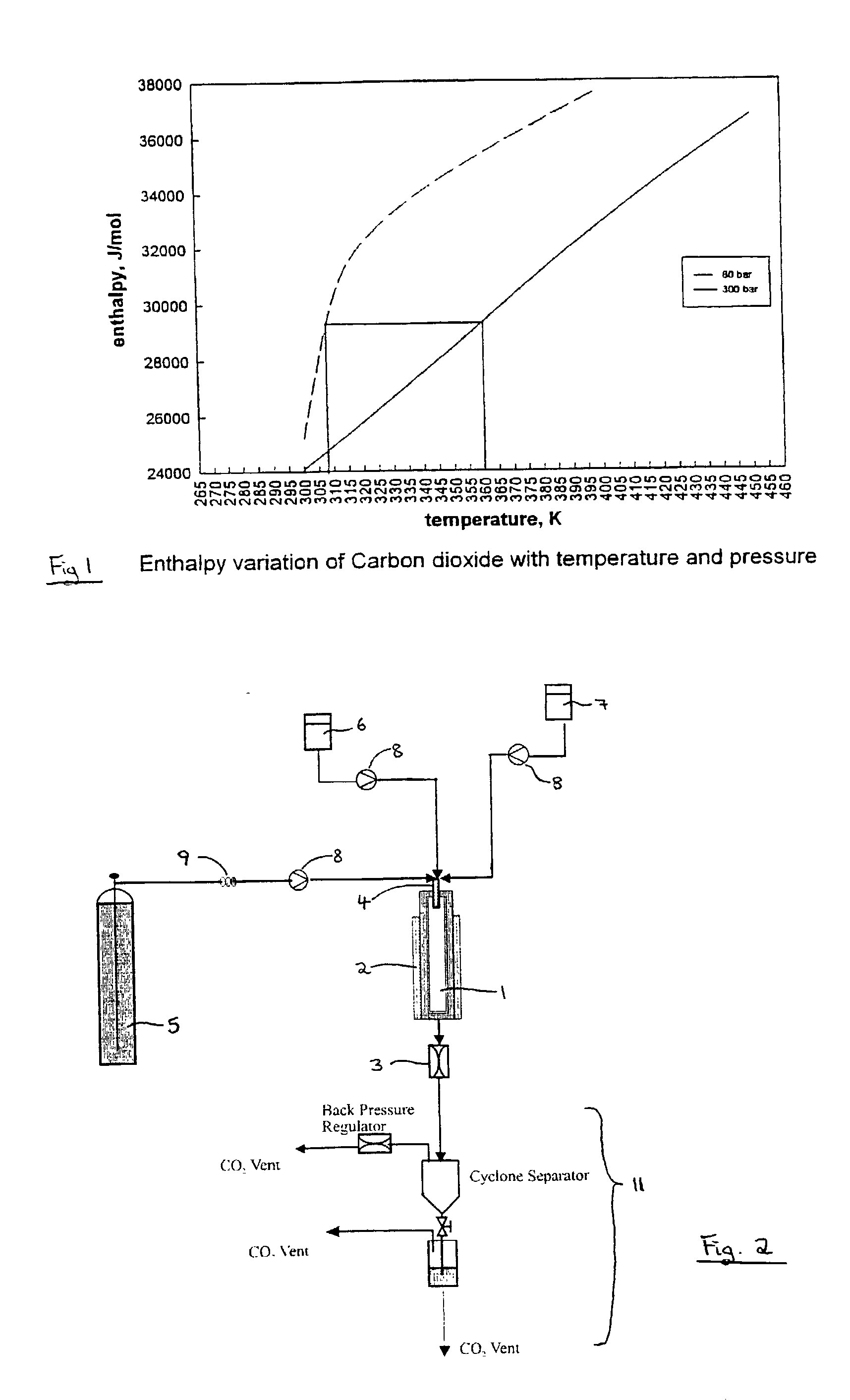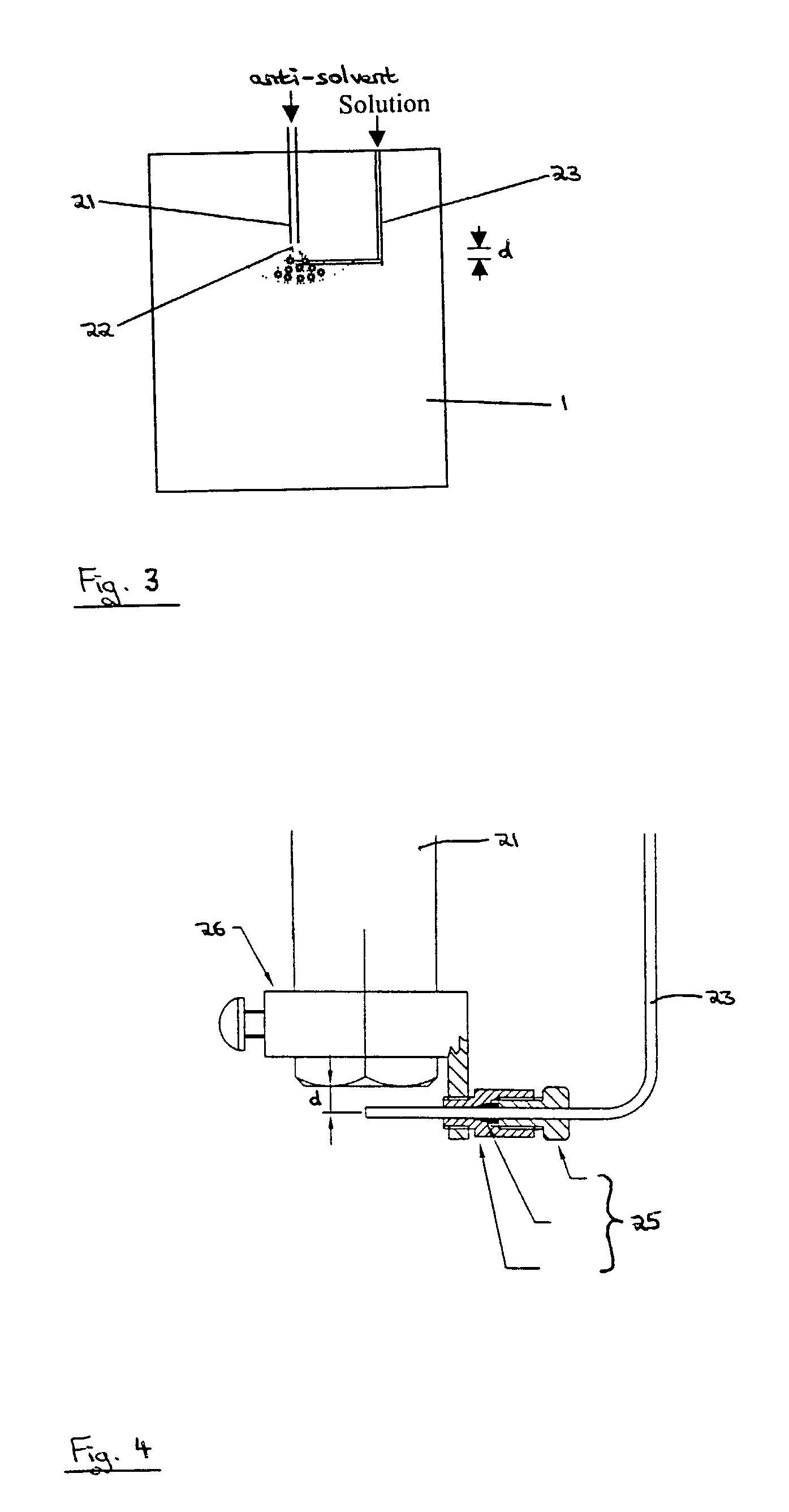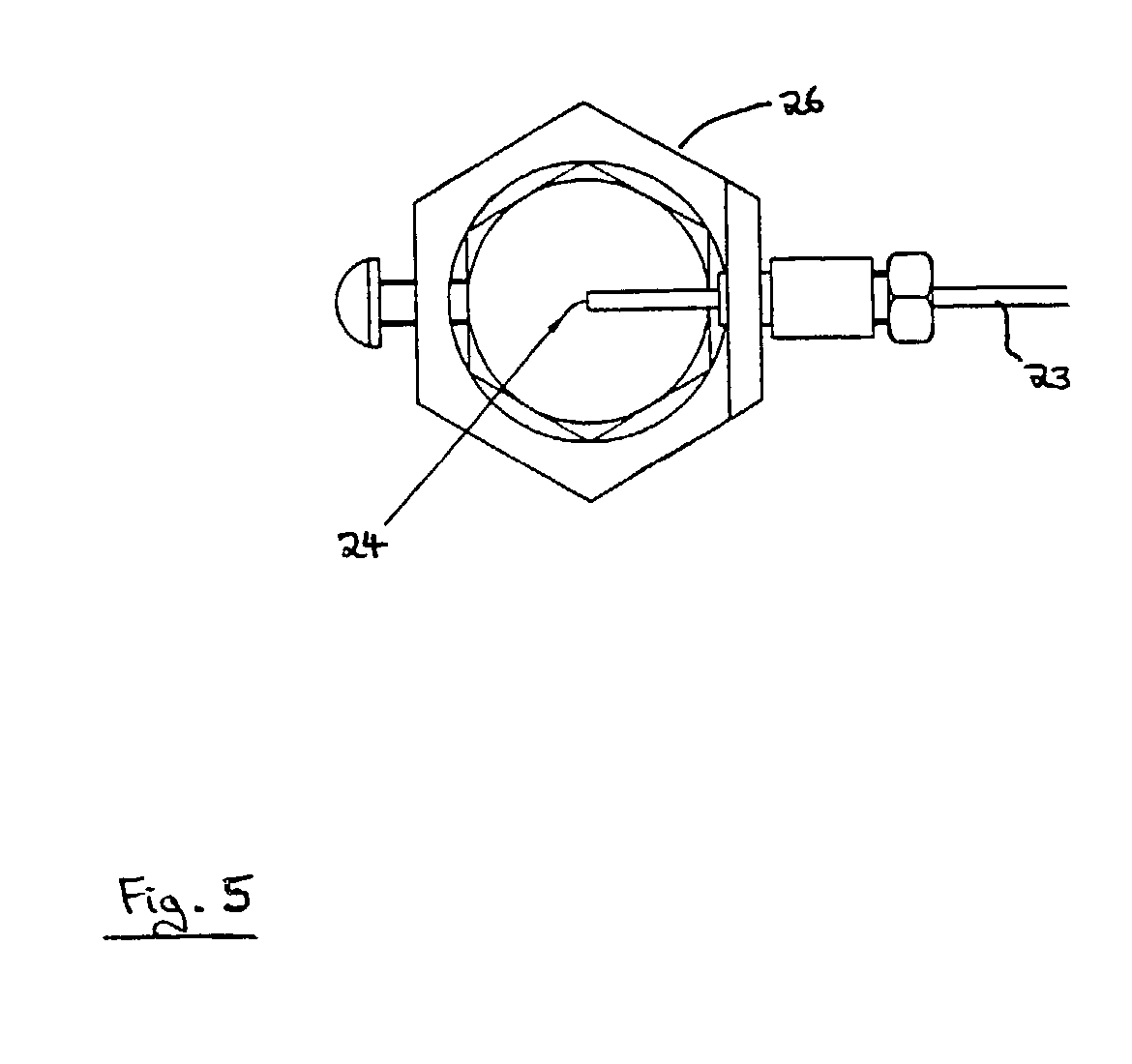Particle formation
a particle and particle technology, applied in the field of particle formation, can solve the problems that authors have not appeared to have achieved such high velocities, and achieve the effect of reducing the risk of apparatus blockage, or substantially eliminating or at least reducing the risk of blockag
- Summary
- Abstract
- Description
- Claims
- Application Information
AI Technical Summary
Benefits of technology
Problems solved by technology
Method used
Image
Examples
examples a
[0109] Various target compounds were dissolved in appropriate solvents and introduced into the apparatus via tube 23. The distance "d" between the outlets of the anti-solvent nozzle and the solution inlet tube was kept constant at 4 mm. Particle formation was allowed to occur by the action of the CO.sub.2 anti-solvent, and the products collected in the vessel 1. The products were assessed by scanning electron microscopy (SEM) and in most cases their particle sizes analysed using an Aerosizer.TM. and / or Sympatec.TM. system.
[0110] The results of these experiments are shown in Table 1 below.
1TABLE 1 Target Target solution solution Product size Product size Expt concentration flow rate (Aerosizer .TM.) (Sympatec .TM.) no. Target solution (% w / v) (ml / min) (.mu.m) (.mu.m) A1 Compound I in 3 4 2.84 -- methanol A2 Compound II in 1.75 4 -- 5.75 methanol A3 Compound III in 3 0.5 1.39 7.99 DMF A4 Compound IV in 0.85 4 -- -- DMF A5 Compound V in 3 1 -- 4.6 DMSO A6 Compound VI in 5 1 0.97 2.5 TH...
examples b
[0112] In these experiments, the distance "d" between the outlets of the anti-solvent nozzle 21 and the solution inlet tube 23 was varied between 0 and 8 mm. In practice, the "0" separation represented the thickness of the inlet tube wall--in other words, as close to zero as was possible without cutting into the nozzle wall. The target solution was 3% w / v compound I in methanol; its flow rate into the particle formation vessel 1 was 4 ml / min.
[0113] The results are shown in Table 2 below.
2 TABLE 2 Distance Product size Expt "d" (Aerosizer .TM.) no. (mm) (.mu.m) B1 0 3.21 B2 4 2.84 B3 8 3.63
[0114] The particle size distributions (by Aerosizer.TM.) for the products of Examples B1, B2 and B3 are shown in FIGS. 10 to 12 respectively.
examples c
[0115] These experiments investigated the effect of the target solution flow rate on the product particle size. Again various target compounds were tested, the operating conditions being as for Examples A.
[0116] The results are given in Table 3 below.
3TABLE 3 Target Target solution solution Product size Product size Expt concentration flow rate (Aerosizer .TM.) (Sympatec .TM.) no. Target solution (% w / v) (ml / min) (.mu.m) (.mu.m) C1 Compound II in 0.75 2 -- 7.8 acetone C2 Compound II in 0.75 4 -- 4.75 acetone C3 Compound IV in 0.85 1 -- -- DMF C4 Compound IV in 0.85 4 -- -- DMF C5 Compound IV in 0.85 8 -- --DMF C6 Compound III in 3 0.5 1.39 7.99 DMF C7 Compound III in 3 1.0 1.86 7.18 DMF C8 Compound III in 3 4 18.18 10.5 DMF C9 Compound V in 1.6 1 -- 9.1 DMF(ac)* C10 Compound V in 1.6 4 -- 42.3 DMF(ac)* C11 Compound VI in 5 1 0.97 2.5 THF C12 Compound VI in 5 4 1.18 3.0 THF *DMF(ac) = DMF acidified with 4% v / v acetic acid
PUM
| Property | Measurement | Unit |
|---|---|---|
| pressure drop | aaaaa | aaaaa |
| temperature | aaaaa | aaaaa |
| angle | aaaaa | aaaaa |
Abstract
Description
Claims
Application Information
 Login to View More
Login to View More - R&D
- Intellectual Property
- Life Sciences
- Materials
- Tech Scout
- Unparalleled Data Quality
- Higher Quality Content
- 60% Fewer Hallucinations
Browse by: Latest US Patents, China's latest patents, Technical Efficacy Thesaurus, Application Domain, Technology Topic, Popular Technical Reports.
© 2025 PatSnap. All rights reserved.Legal|Privacy policy|Modern Slavery Act Transparency Statement|Sitemap|About US| Contact US: help@patsnap.com



